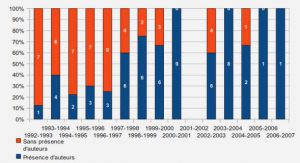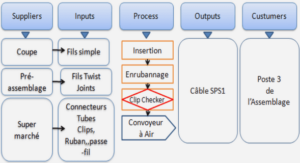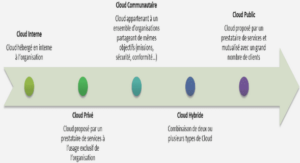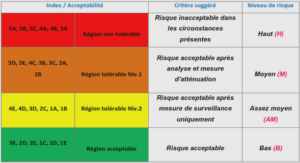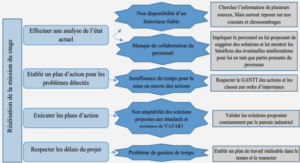Concept of Project Management
Project Management, as a newly developed field since 1990s, has already been a major branch of modern management, being more and more important. Through utilizing the knowledge and experience of project management, the work efficiency of project managers can be greatly promoted and improved (Verzuh, 2008). So what is Project Management? Project management is to apply knowledge, skills, tools and techniques to various activities in project in order to meet various requirements of the project (Project Management Institute, 2004). According to the Project Management Institute (2004), there are four major elements in project management, which include Project People, Product and Process. Nowadays, many organizations have increasing interest in project management, for its resulting high efficiency, as weIl as its wide range of application in different kinds of projects. As in the United States, 2.3 trillion US dollar is spent on projects every year,which is nearly 25% of its GDP. In total, nearly 10 trillion US dollar is spent on aU kinds of projects every year (Butler, 2004). So what is a Project? A project is an endeavor implemented during a temporary period for specific objectives such as creating sorne product, service or result (Project Management Institute, 2004). When those objectives are achieved, or the project is terminated for sorne reason, the project will be ended. Projects are not limited by size/scale – large or small, or time to complete – long or short. As in every project, there are mainly three kinds of goals, which are Scope goals, Time goals and Co st goals. Scope goals define the work range of the project, namely what should be done during the project. Time goals refers to the scheduling of the project, for example, how much time the project has to take to end, as weIl as the scheduling of different phases of the project and various project activities. Cost goals means the project budget, namely, what and how much the project can co st. In project management, project managers have the obligation to balance and achieve these goals (Berkun, 2008).
General Process of Project Management
When a project is to be established, there are mainly five basic processes during the management of the project, which are: initiating, planning, executing, monitoring and controlling, and then crosing (Kerzner, 2005). As stated by Project Management Institute (2004), a successful project is an integration of a series of project management processes; and they have also figured out the general content of each process inc1uding major tasks and objectives. The process of initiating involves project approval, project undertaken, general planning, project macroscopic goal setting, guarantee of relevant materials and resources,coordination with business objectives, project manager commission, and general management (Project Management Institute, 2004; Sarshar, Haigh and Amaratunga, 2004). The process of planning involves setting project scope, specifying project objectives, defining each sector and stage, establishing project schedule, establishing the platform for project members and all stakeholders to share information and communicate, defining the activities for each sector and stage, arranging scheduling and time sequence for each activity, defining skills and resources needed, assessing degree of difficulty of project activities, analyzing and avoiding project risks, assessing and analyzing costs and expenditures, project budget approval and communication planning (Project Management Institute, 2004). The process of executing involves integrating resources and establishing work team, quality guarantee, outsourcing, information releasing and executing the plans (Project Management Institute, 2004). The process of monitoring and controlling involves the management of project team, stakeholders and subcontractors, scheduling management and performance supervision (including integration, scope, scheduling, costs and quality) , problem finding and solving, change management, risk management (involving technology, quality, performance, project management, organizing and external issues), as well as performance reporting and communication (Project Management Institute, 2004; Sarshar et al. , 2004)
Characteristics of Project Team
As a specific type of team, project team has its particular characteristics, sorne of which are like common teams while sorne of which are unique. First, a project team has specific goal(s) (Schmidt, 2009). The mission of a project team is to complete specific tasks, realize the set goals of the project and satisfy the needs of the customers. Furthermore, since the needs and wants of the project stakeholders are multifarious, the goals for the project team will also be diversified (Schmidt, 2009).Second, a project team is a temporary organization (Martin and Tate, 1997). Unlike other teams, a project team has a definite life cycle, determined by the duration of the project. Specifically, when the project is initiated, the project team is then built; when the project is ended, then the project team is dismissed (Martin and Tate, 1997). Third, project manager is the leader of a project team (Forgues and Koskela, 2009). As a independent group or organization, project manager assigned to the project team is the absolute leader, directing and monitoring the processes of the team members working toward the project goals (Forgues and Koskela, 2009). Fourth, a project team puts an even more great emphasis on the spirit of cooperation (Schmidt, 2009). As indicated, a project team is a temporary organization formed by staff from different functional departments, which means there is limited time and conditions for them to get familiar with each other. In this situation, focusing on the spirit of cooperation is particularly important for the project team (Schmidt, 2009). Fifth, it is more flexible for a project team to add or reduce its members (Forgues and Koskela, 2009). Since a project team is established specifically and temporarily for a project, it is more flexible than other teams. In this case, according to the particular needs of the project, the project team can add or reduce its members so as to ensure the effective performance of the team in facilitating the success of the project (Forgues and Koskela, 2009).
Leader’s Roles
Defining the role as a leader in the organization is significant to establishing a successful team. The ability to negotiate, communicate and influence the staff on working is absolutely necessary for a leader (Fairholm, 2003). An effective leader should be competent of organizing the cooperation in the organization, and assisting other working staff on their goals and objectives. As an effective leader creating a successful team, there are several things that should be accomplished as follows (Muna, 2006; Black, Oliver and King, 2009): Set the Example Carry out the leader values and the values of the team, maintain a positive attitude and make sure of an integrated working environment. Communicate Ensure communications with the working staff. Listen to them through proper communicating medium and then help them with their prûblems, to make süre aU wûrking staffs work happily and productively. Make Clarity Give the staff clear instructions or orders that can be weIl understood, and make sure they are thoroughly aware of the goals and objectives ofthe team. Take Action To have a sense of urgency, accomplish missions and tasks on time to move the team forward (Bossidy, 2002). When the team is in complex and difficult situation, the leader should manage to rem ove obstacles and solve major issues. Be aware of risks at any time, to establish risk management in the team. Evaluate Make evaluation on the performance of the working staff regularly, to understand the merits and shortage and make improvement. By the way, the efforts and achievement of the working staff should be rewarded, so they will be encouraged to work more effectively. Trust the working staff and support them to achieve success and confront challenges. Create opportunities for them.Deliver Results Deliver results to the management as weIl as the working staff, so as to engage them to make continuo us improvement with the awareness of their performance. Think The leader should take time to think about the operation and performance of the team, and reflect. Grasp the situation at any time.
|
Table des matières
RÉSUMÉ
ABSTRACT
TABLE OF CONTENTS
TABLE LIST
FIGURES LIST
CHAPITRE 1 INTRODUCTION
CHAPITRE 2 LITERA TURE REVIEW
2.1 PROJECT MANAGEMENT
2.1.1 CONCEPT OF PROJECT MANAGEMENT
2.1.2 GENERAL PROCESS OF PROJECT MANAGEMENT
2.2 PROJECT TEAM
2.2.1 WHAT IS PROJECT TEAM?
2.2.2 CHARACTERISTICS OF PROJECT TEAM
2.3 TEAM AND TEAMWORK
2.3.1 ATTRIBUTES OF A SUCCESSFUL TEAM
2.3.2 BARRIERS TO EFFECTIVE TEAMWORK
2.4 LEADER AND LEADERSHIP STYLES
2.4.1 LEADER’S ROLES
2.4.2 LEADERSHIP STYLES
2.5 AUTONOMY IN MANAGEMENT
2.5.1 DEFINITIONS OF AUTONOMY
2.6 SELF MANAGEMENT
2.6.1 CONCEPT OF SELF MANAGEMENT
2.6.2 SELF MANAGEMENT AND SELF MANAGING TEAM
2.6.3 LEADER IN SELF MANAGING TEAMS
2.7 HUMAN RESOURCE MANAGEMENT
2.7.1 CONCEPT OF HUMAN RESOURCE MANAGEMENT
2.7.2 ROLE OF HUMAN RESOURCE MANAGEMENT
2.7.3 SIGNIFICANCE OF HUMAN RESOURCE MANAGEMENT
2.8 MOTIVATION
2.9 PERFORMANCE MANAGEMENT
2.9.1 DEFINITIONS OF PERFORMANCE
2.9.2 PERFORMANCE MANAGEMENT SySTEM
2.10 MANAGEMENT CONTROL AND PERFORMANCE MANAGEMENT
2.10.1 RELATIONSHIP OF MANAGEMENT CONTROL AND PERFORMANCE MANAGEMENT
2.10.1 EVOLUTION OF PERFORMANCE MANAGEMENT BASED ON MANAGEMENT CONTROL
2.10.2 IMPLICATIONS AND SUMMARY
CHAPITRE 3 RESEARCH METHODOLOGY
3.1 INTRODUCTION
3.2 RESEARCH QUESTION
3.3 RESEARCH OBJECTIVES
3.4 VARIABLES AND CONCEPTUAL FRAMEWORK
3.4.1 KEY VARIABLES
3.4.2 CONCEPTUAL FRAMEWORK
3.4.3 RESEARCH HyPOTHESIS
3.5 RESEARCH METHODS APPLIED
3.5.1 DATA COLLECTION
3.5.2 DATA ANALySIS
3.6 RESEARCH LIMITATIONS
CHAPITRE 4 QUESTIONNAIRE SURVEY: DISCUSSION AND ANALYSIS
4.1 E XPLANATION ON THE QUESTIONNAIRE FACTORS
4.2 QUANTITATIVE ANALYSIS OF QUESTIONNAIRE SURVEY RESULTS
4.2.1 RELIABILITY AND V ALIDITY OF SCALES
4.2.2 FACTOR ANALYSIS
4.2.3 CORRELATION ANALYSIS
4.2.4 REGRESSION ANALYSIS
4.2.5 ANALYSIS OF VARIANCE
4.2.6 INTERACTIVE ANALYSIS
4.3 DISCUSSION OF QUESTIONNAIRE SURVEY RESULTS
4.3.1 DISCUSSION OF KEY FACTORS OF LEADER STYLES
4.3.2 DISCUSSION OF BASIC RELATIONSHIP BETWEEN LEADER STYLES AND LEADERSHIP PERFORMANCE
4.3.3 COMPARATIVE ANALYSIS OF LEADER STYLES
CHAPITRE 5 CONCLUSION AND SUGGESTION
5.1 CONCLUSION
5.2 ApPORTS ET LIMITES DE L’ETUDE
REFERENCES
APPENDIX
![]() Télécharger le rapport complet
Télécharger le rapport complet

